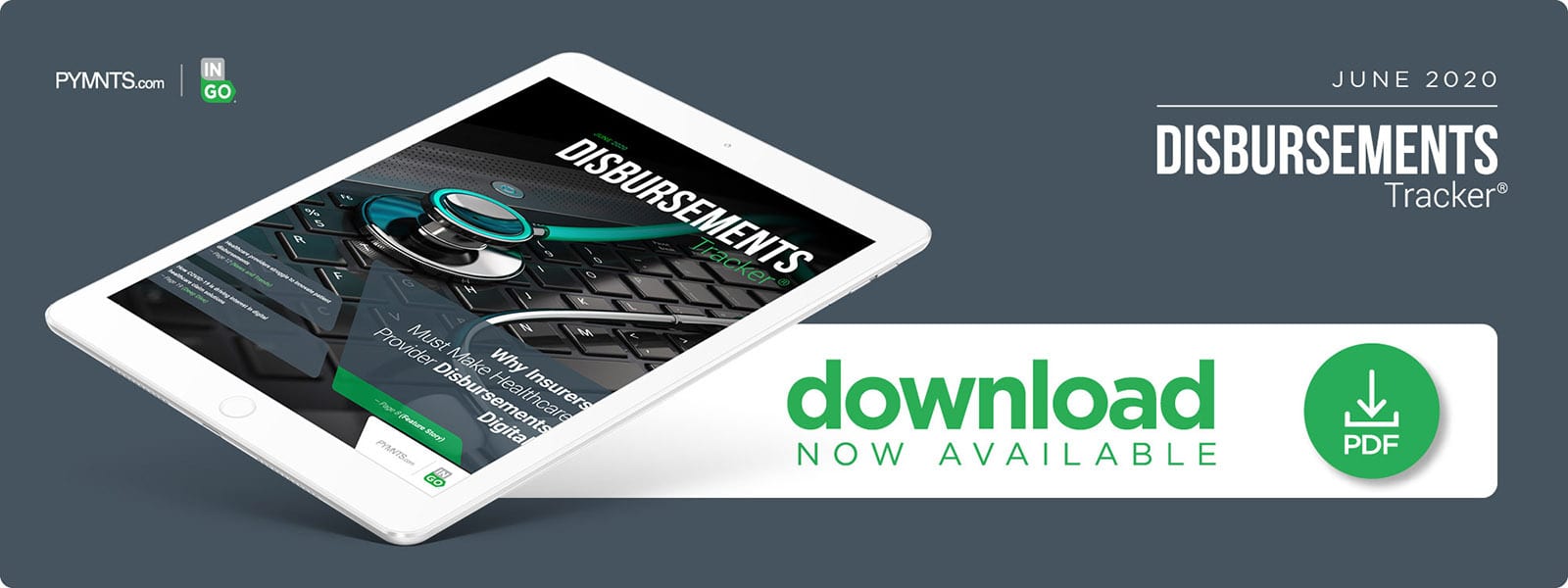Deep Dive: How The COVID-19 Pandemic Is Pushing Digital Healthcare Disbursements Adoption

Healthcare providers were facing problems with slow, disorganized disbursements before COVID-19 shook the industry to its core.
There was already disparity in how patients were receiving funds from providers and the methods they wanted to use, with one pre-outbreak Ingo Money study noting that less than 10 percent of U.S. consumers chose checks for their disbursements but that more than 40 percent were being paid that way.
Digital methods for health insurance payments are on the rise, though, with claims processed via ACH payments now accounting for approximately 80 percent of all healthcare transactions. The remaining 20 percent are paid through paper checks — regardless of whether patients have chosen the method — which can take weeks to arrive before funds can be accessed.
The pandemic has not made those wait times for checks more palatable for the insurers and payment firms forced to process them, either. Checks cost healthcare providers between $3 and $20 to process, compared to the roughly 50 cents it takes to send ACH payments, and the added expenses could easily strain these services amid higher-than-average patient volumes. This has created a surge of interest in and adoption of digital medical services that remotely connect patients with doctors without the former needing to visit medical offices or hospitals.
Telehealth company Teladoc reported rising revenues and expanding usage, noting that visits to its platform have grown by 92 percent so far in 2020 when compared to 2019 figures.
State regulators and healthcare organizations are also turning to online programs to help fulfill patients’ medical needs while lowering their risks of exposure to COVID-19. U.S. national healthcare program Medicare has expanded the online health programs it offers, covering doctor visits conducted through telehealth services. The U.S. Department of Health & Human Services (HHS) Office for Civil Rights has made similar announcements, noting it will allow providers to use video platforms like FaceTime and Skype for telehealth visits.
Telehealth use in the U.S. healthcare industry is currently projected to grow by 64.3 percent by the end of 2020, but this rise in virtual healthcare solutions must come with equal growth in digital payment adoption. The following Deep Dive examines the pandemic’s impact on telehealth and digital disbursements’ use in healthcare, what that means for online disbursements and how both might influence the future of patient payments.
Instant Healthcare Influence
The COVID-19 pandemic has meant months of nonstop work for doctors, nurses, other medical professionals, regulators and insurers. Insurers and their payment providers have been racing to address a flood of new requests and claims over the past few months, and many are finding just how inadequate the payment processes they have in place are for this task.
Electronic claim payments are not new to healthcare, but the number of claims that must now quickly be approved is overwhelming providers’ payment networks, and they must confront issues with their digital claims tools’ effectiveness. Many begin their move to electronic disbursements by creating support for ACH payments that are directly deposited into patients’ bank accounts. The method is not available to those without bank accounts, however, which is leading to additional problems — especially during the pandemic, which is leaving underbanked and lower-income individuals more financially vulnerable. Twenty-five percent of U.S. households were classified as unbanked or underbanked in 2019.
The number of American consumers worried about medical bills is also growing. Thirty-six percent recently reported concerns about affording COVID-19 testing, for example, and a separate study found that 26 million U.S. employees are now out of work. These consumers are thus frustrated waiting for unemployment, government stimulus and healthcare claim checks to appear, as they are relying on these funds to pay their bills and purchase necessary goods.
The need for instant healthcare disbursements is being felt more deeply by consumers than ever, and digital ACH payments — which often take two to three business days to finalize — are no longer speedy enough. Implementing alternative methods to more quickly help funnel these claims to patients is critical, but healthcare insurers still face challenges in integrating them.
Instant Disbursements’ Innovation Barriers
Insurers looking for swift ways to finalize healthcare claims still face hurdles, many of which were present before the COVID-19 outbreak. Checks have largely remained the industry default for so long because supporting newer payment methods meant figuring out how they would work with the patient details that must be included during the claims process. Information such as home addresses, Social Security numbers and insurance details must be verified before funds can be sent, but such processes are usually manual. These payments are thus slower in nature — matching the speed of physical paperwork — while digital disbursements can vastly outpace such legacy processes.
Providers are now creating systems that can electronically store these details alongside other medical information, but they must be sure they are implementing authentication tools that can keep up with instant payment methods. Many are still adjusting to ACH disbursements that run on legacy systems tailored for check claim payments or employees manually verifying details on paper documents. These providers may have to completely overhaul their operations in the near future — especially as interest in telehealth solutions leads to more data stored and shared on payment networks.
Another goal for providers is offering customers various digital disbursement options rather than relying on ACH. Tools like virtual cards — which are cards issued online with encrypted numbers to protect against digital fraud — have emerged as a potential addition to ACH disbursements because they can send payments more swiftly and with additional security. One study predicts these cards will increase in use by 90 percent by 2023 and that the healthcare industry will be responsible for much of this growth.
Implementing instant disbursement strategies means insurers and their payment partners will need to consider their patients’ claims processes in fundamentally different ways. Patients are seeking convenient experiences during a highly stressful financial and medical period, and seamless disbursements must be considered integral to accommodating their needs. Doing so will not only provide more convenience, but also ensure patients are receiving essential funds and maintaining crucial relationships with healthcare providers.

